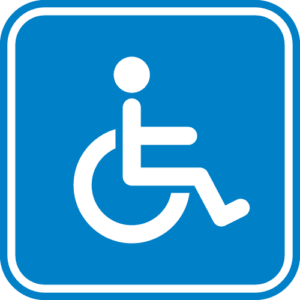Seatbelts are a standard safety feature in all vehicles on the roads today. We all know their importance in preventing severe injuries. In Alberta, wearing seatbelts is also the law. If you were injured in a motor vehicle accident and were not wearing your seatbelt at the time, you are still entitled to seek compensation for your injuries from the at-fault driver. However, the amount of compensation you receive could be reduced, based on contributory negligence.
To find out how not wearing a seatbelt may affect your insurance claim, contact Joseph A. Nagy Injury Law. Ask for a free consultation.

What is the seatbelt law in Alberta?
In general, the seatbelt law in Alberta requires that:
- All vehicles must have operational seatbelts.
- The driver and all passengers must be wearing seatbelts or properly installed child restraints while the vehicle is in motion.
- The driver of the vehicle is responsible for ensuring that everyone is wearing a seatbelt.
- Not wearing a seatbelt can result in a fine and can affect your insurance costs.
There are some exceptions to these seatbelt requirements, such as for specific medical conditions. The Government of Alberta’s Document restraint laws and the Vehicle Equipment Regulation provide further information.
Not wearing a seatbelt. Can I still sue to get compensation for my injury?
Yes, you can still sue for damages for your injury if you were not wearing a seatbelt at the time of your accident.
The amount of compensation will depend on how much your negligence (not wearing a seatbelt) contributed to your injury?
What is Contributory Negligence?
Contributory negligence is a legal principle stipulating that each of us is required to act reasonably to protect our own safety. A person who fails to take reasonable care of him or herself contributes to his or her own injury and may be held partly responsible. Common examples in traffic accidents include driving while intoxicated, breaking a traffic rule, and not wearing a seatbelt.
The Alberta Contributory Negligence Act provides that if two or more parties bear some responsibility for an accident, the court will divide liability between them, based on their degree of fault.
Let’s use the example of a vehicle accident, where you are the plaintiff seeking compensation for your injury. The court decides that you were 50 percent at fault for what happened. The other party (the defendant) was also 50 percent at fault. As a result, the liability will be split between the two parties. The same percentages will be applied to the amount of damages that you are awarded. So, if the court decides that your injuries and losses are worth $100,000 but you were 50 percent at fault, your damages will be reduced by 50 percent. You will only be awarded $50,000.
Contributory negligence is often raised by defendants. If the award for damages is to be reduced, the burden of proof rests with the defendant. The defendant must allege, and then prove, that the plaintiff did something, or failed to do something, that caused or contributed to his or her injuries. The plaintiff should therefore bear some of the responsibility. It will be up to the court to decide what percentage each party was at fault.
How does contributory negligence apply to not wearing a seatbelt?
The same principle of contributory negligence usually applies to seatbelt use. Typically, if you were in a motor vehicle accident and were not wearing your seatbelt, the court will find that you contributed to your own injuries. The court will then divide the liability for the accident, thereby reducing the compensation you will be awarded. This outcome depends on a finding that your failure to wear a seatbelt was causally related to your injuries. In other words, the court must conclude that not wearing a seatbelt either caused your injuries or resulted in them being more serious than they otherwise would have been. Remember, however, the defendant must prove that wearing a seatbelt would have avoided or reduced your injuries.
In weighing the evidence, the court will also be guided by precedents from previous cases. Your injury lawyer should be familiar with the relevant case law and can help you understand how the court may view the evidence in your case. Let’s look at some examples.
Heller v. Martens: 25% Reduction in Compensation
The Alberta Court of Appeal discussed the relationship between contributory negligence and seatbelt use in Heller v. Martens. The plaintiff was involved in a motor vehicle accident and suffered a severe injury to his shoulder. The vehicle he was in did not have seatbelts. The evidence showed that if the plaintiff had been wearing a seatbelt, his injuries would have been greatly reduced.
The court found that even though the accident was not the plaintiff’s fault, he still had to bear some responsibility for his injuries because he was not wearing a seatbelt. He contributed to the accident and was found to be 25 percent at fault for what happened.
Jones v. Cheesebrough: 40% Reduction in Compensation
Jones v. Cheesebrough is another example of a case where the courts applied the principle of contributory negligence for failure to wear a seatbelt. In this case, the plaintiff was a passenger in a vehicle driven by the defendant. The driver was intoxicated and collided with a parked vehicle while travelling at a high rate of speed. The plaintiff, who was not wearing her seatbelt, suffered a head injury as well as fractures to her right arm. Expert evidence showed that if she had been wearing her seatbelt, her head would likely not have struck the interior of the vehicle. Therefore, the extent of her injuries would have been materially reduced.
The court found that the plaintiff had contributed to her own injuries by failing to wear a seatbelt and riding in a car with an intoxicated driver. She was held to be 40 percent at fault, and the damages awarded to her were reduced by a corresponding percentage.
Madge v. Meyer: No Reduction in Compensation
A defendant may be be found 100 percent liable for the plaintiff’s injuries, even though the plaintiff was not wearing a seatbelt. How? The court must decide that the failure to wear the seatbelt did not contribute to the injuries that the plaintiff sustained. This is a fact-specific determination based on the evidence presented in each case. The defendant has the burden to prove that the plaintiff was not wearing a seatbelt, and that his or her injuries would have been avoided or reduced if the belt had been worn.
In the case of Madge v. Meyer, the defendant ran a stop sign at an intersection, colliding with the plaintiff’s vehicle. The plaintiff suffered a brain injury in the accident. The defendant argued that the plaintiff contributed to his own injuries by not wearing his seatbelt. In the accident, the plaintiff’s head struck either the sun visor or the instrument panel of his vehicle.
However, based on all the medical evidence presented at trial, the court was not satisfied on a balance of probabilities that the plaintiff’s injuries would have been avoided or significantly reduced if he had been wearing the seatbelt. Because the defendant could not show that the failure to wear the seatbelt had a causative effect on the plaintiff’s injuries, there was no contributory negligence, and the plaintiff was entitled to the full amount of his damages.
Contact a qualified injury lawyer for a free consultation
The relevant evidence and case law can be complex in cases where the injured party was not wearing a seatbelt. If you were injured in a motor vehicle accident and weren’t wearing a seatbelt, I urge you to contact a qualified injury lawyer. The defendant’s insurance company will almost certainly produce expert testimony to prove a reduced claim based on contributory negligence. A qualified injury law firm, like my own, will have a team of experts to act on your behalf.
If I can help, please contact or call (780) 760-4878 (HURT) to ask for a free consultation. Once I know the facts of your case, I can recommend a strategy to help you obtain maximum compensation for your injury claim.








